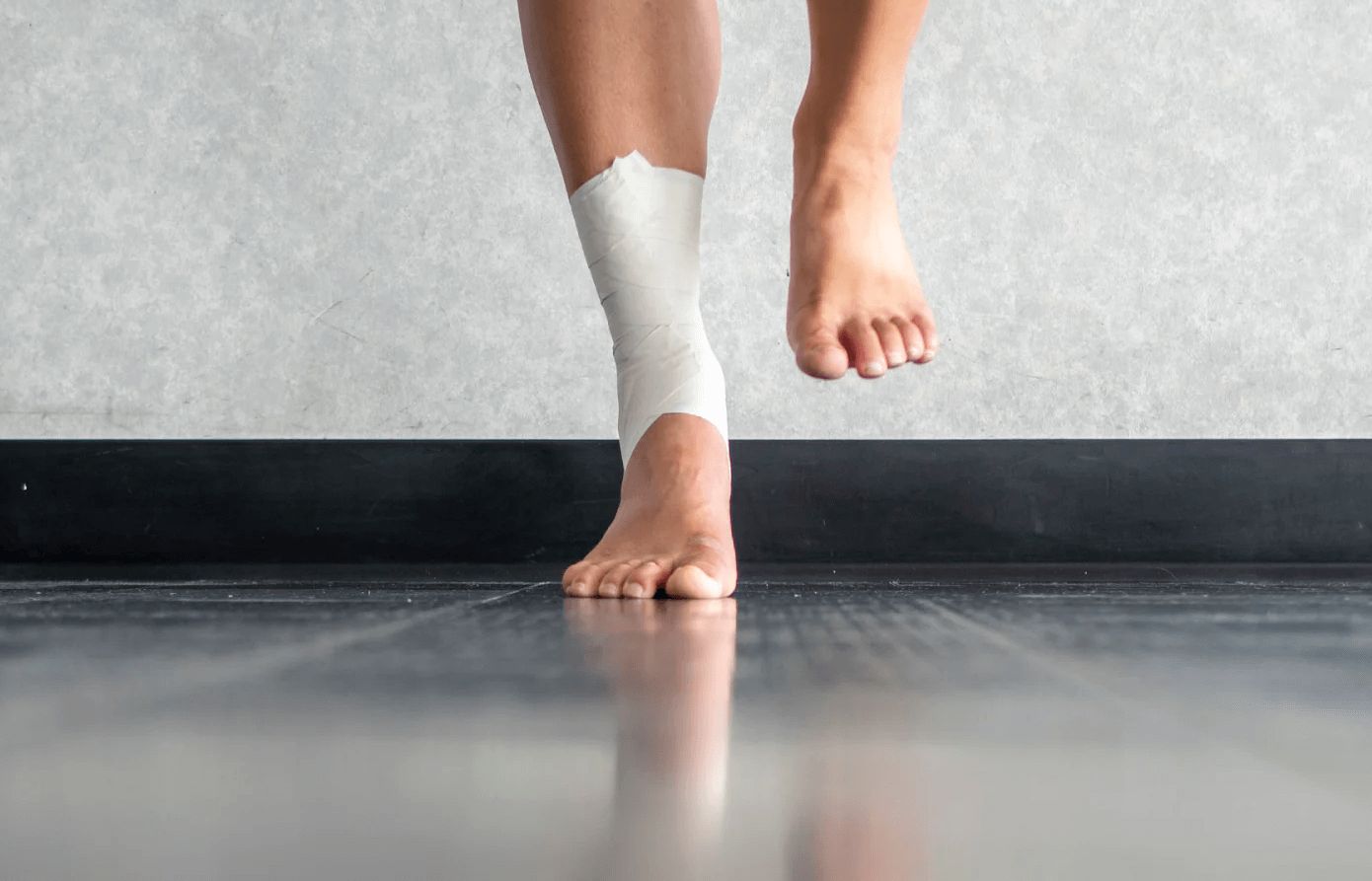- Thriving Guide
- Posts
- Rebuilding Ankle Strength Post-Injury
Rebuilding Ankle Strength Post-Injury
Strengthening your ankle after an injury is key to recovery and preventing future sprains here’s a step-by-step guide to help you heal safely.

An ankle injury can be frustrating whether it's a minor sprain or a more serious tear, it often disrupts daily movement, workouts, and overall confidence in your step. But rebuilding ankle strength after injury is not only possible it’s essential for regaining stability, balance, and full function.
The key? A progressive, consistent rehab plan that gradually strengthens the muscles and ligaments surrounding your ankle while protecting it from further damage.
Here’s how to strengthen your ankle post-injury, from early recovery to full weight-bearing movements.
Before You Begin:
Most people can begin gentle, non-weight-bearing exercises within 48 to 72 hours after a sprain, but always consult your healthcare provider or physical therapist before starting any rehab program.
Early-Stage Recovery: Non-Weight-Bearing Mobility
These exercises build range of motion and gently activate key ankle muscles without placing your weight on the joint.
1. Dorsiflexion (Toes Toward Shin)
Sit or lie with your leg straight.
Pull your foot back toward your nose without moving your knee.
Hold for 15 seconds, relax, and repeat 5 times.
2. Plantar Flexion (Toes Pointed Forward)
Point your foot forward until you feel a gentle stretch.
Hold for 15 seconds, then return to neutral. Repeat 5 times.
3. Inversion (Turn Inward)
Rotate your foot so the sole faces your other leg.
Hold for 15 seconds, then relax. Repeat 5 times.
4. Eversion (Turn Outward)
Rotate your foot so the sole faces away from your other leg.
Hold for 15 seconds. Repeat 5 times.
5. Ankle Alphabet
With your foot dangling off a bed or chair, draw the alphabet in the air using your big toe.
This improves multi-directional mobility.
Isometric Strengthening (Muscle Engagement Without Movement)
Once motion feels more comfortable, add isometric resistance to gently activate ankle muscles.
6. Inversion Isometrics
Press the inside of your foot against a fixed object (like a wall).
Push gently without moving your ankle. Hold for 15 seconds. Repeat 5 times.
7. Eversion Isometrics
Press the outside of your foot against a doorframe or object.
Hold for 15 seconds. Repeat 5 times.
Mid-Stage Recovery: Resistance Band Strengthening
As strength improves, add Theraband resistance to build targeted muscle power.
8. Resisted Dorsiflexion
Tie a band to a table leg, loop around the top of your foot.
Pull toes back toward you, hold for 2 seconds, then release.
Perform 10–15 reps.
9. Resisted Plantar Flexion
Hold the band and loop under your foot.
Point your foot forward, hold 2 seconds, then return.
Perform 10–15 reps.
10. Resisted Inversion & Eversion
Loop the band around your foot.
Move your foot inward (inversion) or outward (eversion), keeping toes up.
Hold each movement for 2 seconds, then return. 10–15 reps each.
Weight-Bearing Strengthening and Stability
When you can bear weight comfortably, begin partial and full weight-bearing exercises to strengthen and prepare for functional movement.
11. Seated Calf Raises (Partial Weight-Bearing)
Sit with your foot on the ground.
Lift your heel up, keeping toes on the floor. Lower slowly.
Repeat 10 times.
12. Standing Weight Shift (Partial Weight-Bearing)
Stand holding a chair or wall.
Shift some weight onto your injured foot and hold for 15 seconds.
Repeat 10 times.
13. Single-Leg Stance (Full Weight-Bearing)
Stand on your injured foot.
Lift the opposite foot off the ground. Hold for 15 seconds.
Repeat 10 times, increasing hold time as you improve.
14. Standing Calf Raises
Stand on your injured foot and rise onto the ball of your foot.
Hold for 15 seconds, then lower.
Repeat 10 times.
15. Lateral Stepping
Place a towel beside your injured foot.
Step over with your injured foot, then your uninjured foot.
Repeat the movement back and forth 10 times.
Advanced: Plyometrics and Balance Work
These exercises improve power and prevent future injury. Only do these once cleared by a professional.
16. Lateral Jumps
Hop side to side over a towel, landing softly on one foot.
Alternate legs, increasing speed gradually.
17. Towel Balance Challenge
Stand on a folded towel with your injured foot.
Lift the opposite foot and balance for 15–45 seconds.
Repeat 10 times. Try a wobble board to increase difficulty.
Tips for a Safe Recovery
Progress slowly and increase intensity based on how your ankle responds.
Avoid pain discomfort is normal, but sharp pain is not.
Stay consistent with daily practice for best results.
Combine rehab with rest, hydration, and proper footwear.
If at any point you experience increased pain or instability, consult your physical therapist to reassess your plan.
The Bottom Line
Recovering from an ankle injury takes time, but with the right progression of exercises, you can rebuild strength, improve mobility, and protect your ankle from future injuries. Whether you're an athlete returning to sport or simply want to walk with confidence again, consistency is your best ally.
If you found this helpful, share it or subscribe to our newsletter for more recovery and wellness tips.